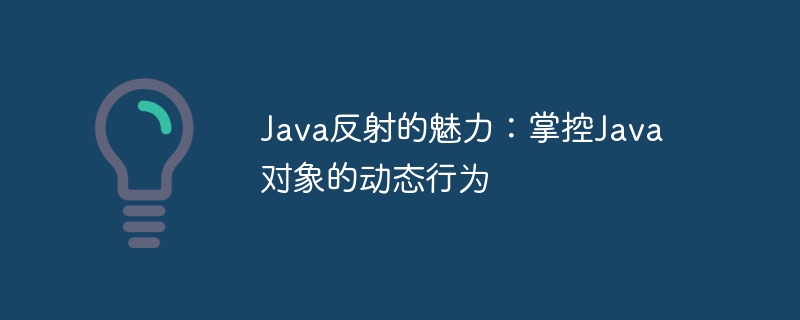

As one of the important features in Java programming, Java reflection technology has the unique charm of mastering the dynamic behavior of Java objects. Through the reflection mechanism, developers can check and modify information such as classes, methods, fields, etc. while the program is running, and realize functions such as dynamically creating objects and calling methods, which greatly improves the flexibility and scalability of the code. This article will delve into the principles, application scenarios and usage techniques of Java reflection to help readers better understand and utilize this powerful feature.
One of the most common uses of reflection is runtime type checking. This refers to a program checking the type of an object at runtime in order to decide what to do with the object. For example, a program can use reflection to check whether an object is an instance of a certain type, or to obtain the class name of an object. This is useful for dynamic programming, as the program can make different decisions at runtime depending on the type of object.
Another use of reflection is dynamic programming. This refers to a program creating or modifying objects while it is running. For example, a program can use reflection to create instances of new objects or to modify the values of existing objects. This is useful for dynamically creating user interfaces or generating dynamic content.
Reflection can also be used for debugging and testing. By using reflection, you can inspect the structure and behavior of an object, as well as call any of the object's methods. This helps to find errors in the program and verify the correctness of the program.
The following is some sample code using reflection:
// 获取对象的类名
Class<?> cls = object.getClass();
// 获取对象的字段名
Field[] fields = cls.getDeclaredFields();
// 获取对象的属性并打印
for (Field field : fields) {
Object value = field.get(object);
System.out.println(field.getName() + ": " + value);
}
// 获取对象的方法名
Method[] methods = cls.getDeclaredMethods();
// 调用对象的某个方法
Method method = cls.getDeclaredMethod("methodName");
method.invoke(object);Reflection is a very powerful mechanism, but it can also be abused. For example, reflection can be used to modify an object's private fields, which may cause the program to behave unexpectedly. Therefore, when using reflection, you should exercise caution and avoid modifying an object's private fields.
The above is the detailed content of The Charm of Java Reflection: Controlling the Dynamic Behavior of Java Objects. For more information, please follow other related articles on the PHP Chinese website!




